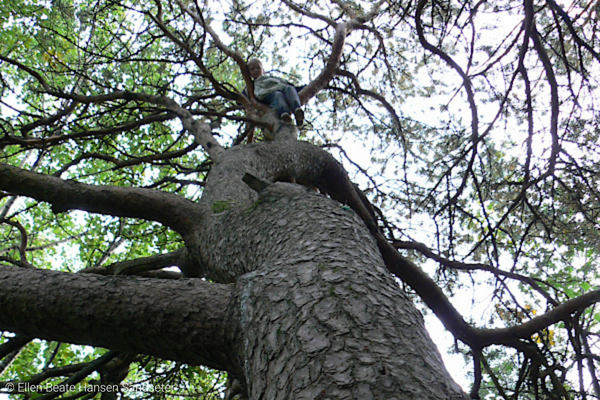Spaces for risky play and learning risk management

Among the benefits of children’s engagement in risky play are the “lessons for life” that they unconsciously learn while practising handling risks. Risky play, as several researchers argue, is a way for children to enhance their risk mastery skills. Children approach the world around them through play; they are driven by curiosity and a need for excitement; they rehearse handling risky real-life situations through risky play; and they discover what is safe and what isn’t. Unfortunately in this regard, modern western societies have a growing focus on children’s safety, particularly in their play and play environments.
Image: Ellen Beate Hansen Sandseter
Although children naturally seek thrilling and risky play, features in the play environment will also affect how they play. The play environment invites and inspires children to certain types of play. According to Heft (1988), children perceive and interpret their environment based on function – what they can do there and how they can use the features in the environment to create play. In this way, an environment affords different types of play, depending both on its own characteristics and on the characteristics of the individual who interprets it; a fallen tree can invite the five-year-old to climb on it, and the three-year-old to crawl under it or sit on it. An open lawn can invite rough-and-tumble play among four-year-olds and fast-paced running for two-year-olds.
Studies have shown that playgrounds composed of woods and trees, and the use of playground equipment made from natural materials such as wood and ropes, lead to more enthusiastic, active and challenging play among children. On the other hand, traditional playgrounds with equipment such as jets, roller coasters, bumps, sandboxes and climbing gear feature the least challenging play for children, and the most non-play, such as standing and “hanging around” or just walking around.
Image: Ellen Beate Hansen Sandseter
Play involving gross-motor activity and basic movements (running, jumping, throwing, climbing, crawling, rolling, swinging and sliding) is more dominant among pre-schoolers playing in natural areas compared with those playing in traditional kindergarten playgrounds. Landscape structures such as steep cliffs, large rocks and trees invite and inspire children to challenging climbing and sliding. Natural playgrounds and nature areas are places where a child can face versatile challenges that require physical and motor skills, risk management and emotional regulation, and which can at the same time provide them with excitement. Playing and moving in a natural environment provides a wide variety of small and large risks that the child must learn to cope with along the way, as well as suitable challenges for everyone, regardless of age, size, skill level or interests.
When developing spaces for play and learning, we should not forget children’s need for thrilling and exciting experiences. Uneven surfaces, exciting climbing opportunities, steep slopes for sliding, challenging and flexible loose parts and tools, and elements of nature should be part of children’s play environment. This will foster great experiences and excitement in children, as well as teaching them how to handle risk situations and risk management.
Ellen Beate Hansen Sandseter is a professor at Queen Maud University College (QMUC) in Trondheim, Norway. Her research focus is children’s well-being, physical play, outdoor play and risky play. She is currently the project manager of the EnCompetence project, focusing on how physical environments contribute to play, learning, and psychosocial and physical health among young children.




